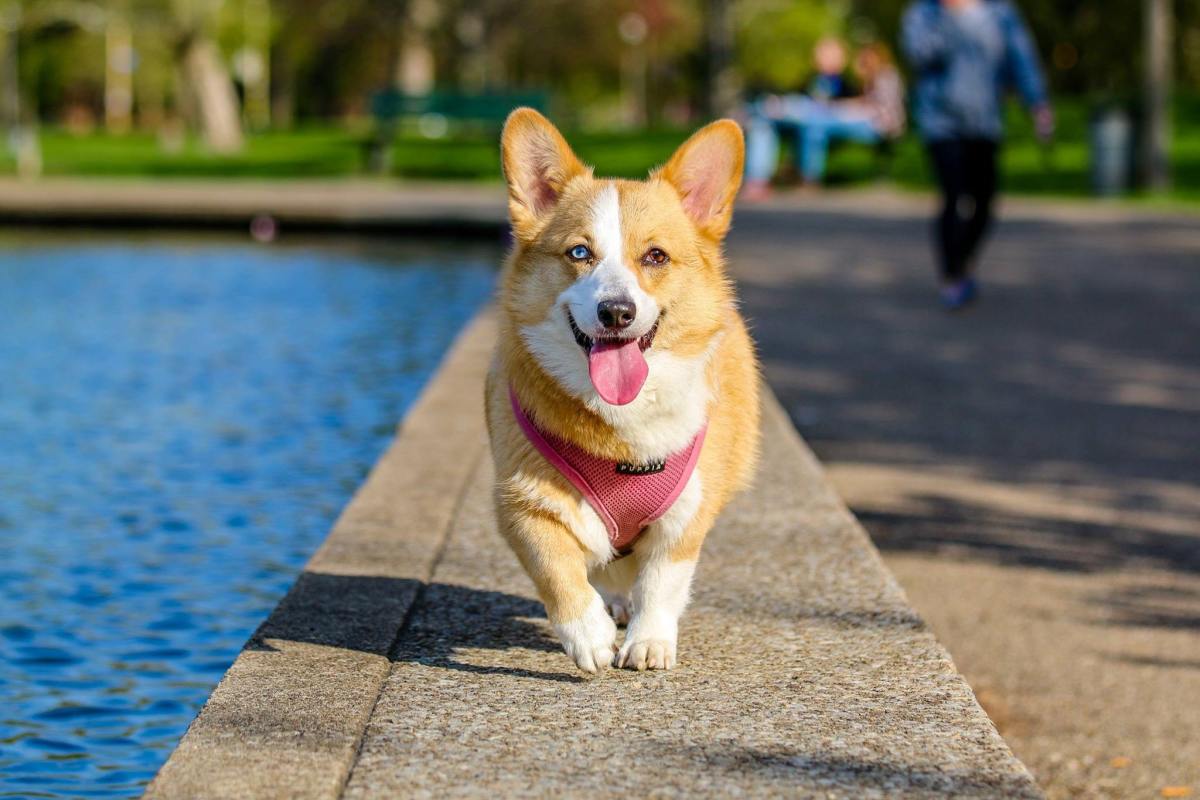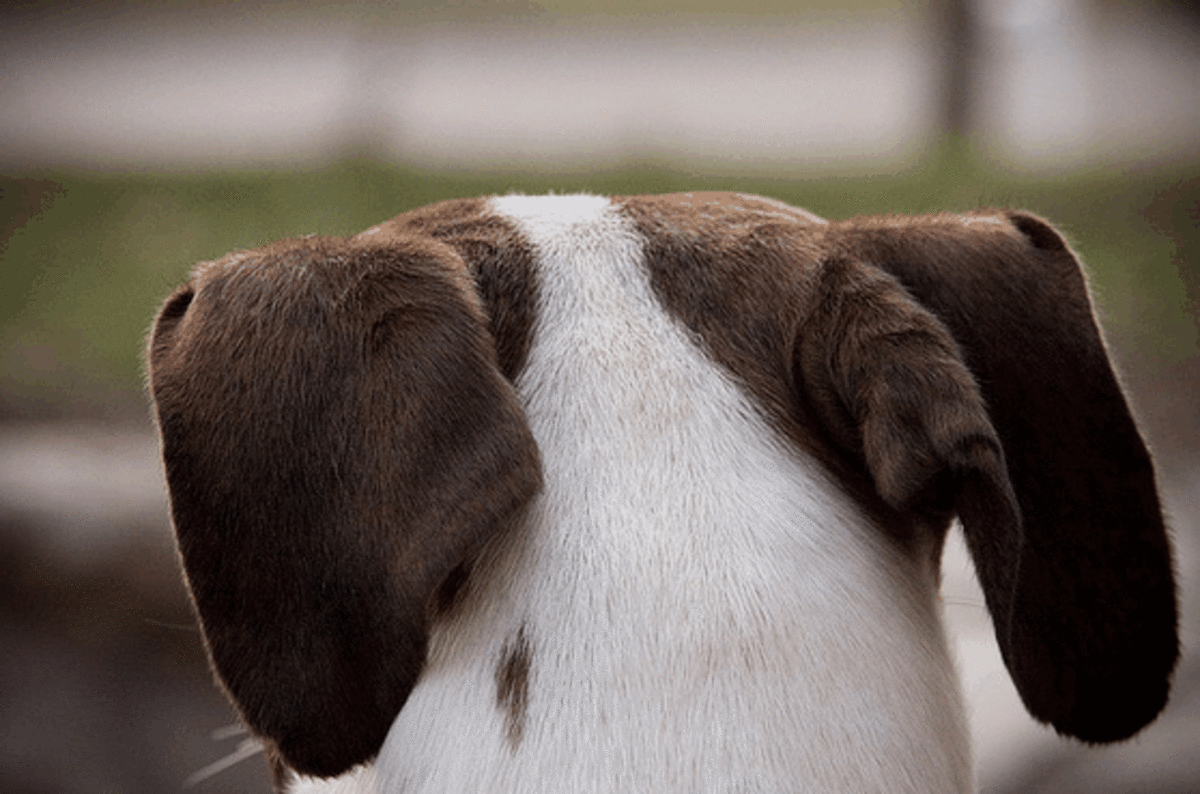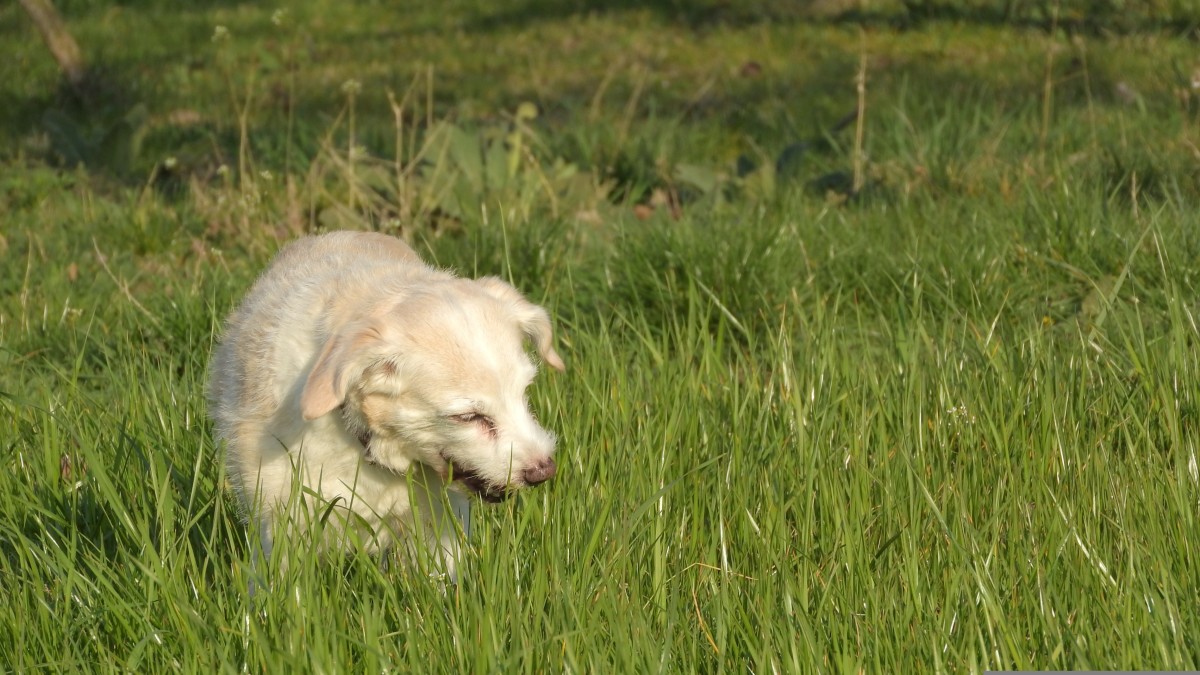Reading Your Dog's Body Language
What is Your Dog Telling You?
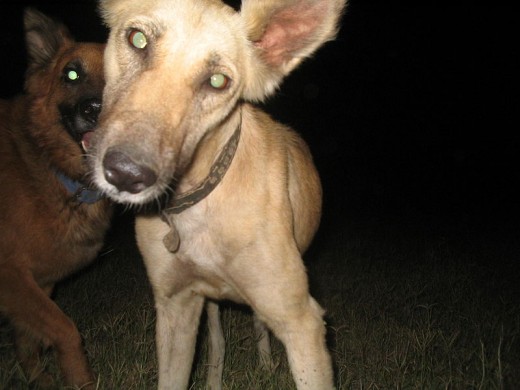
How Dogs Communicate
Dogs use movements and sounds to signal other dogs and us humans. There are various forms of communication that dogs use. It is believed this is part of the social behavior of dogs.
There a numerous vocalizations that dogs use to express their needs and what they are feeling. They will bark, whine, growl, whimper, howl, and it can even sometimes sound like words. They move their eyes, ears, nose, mouth, head, eyebrows, tail, their whole body in conjunction with the sounds they elicit.
We know through genetic research that dogs are direct descendants of the grey wolf. Wolves are pack and social animals and communicate with their body and with sounds to their pack members. In these motions and movements, the wolves elicit dominance and submission to the others in their group. These same body gestures and vocalizations are seen in our dogs today.
Dominant stances can be seen when the dogs and wolves are seen standing with a stiff tail and with stiff legs. Their ears are usually leaning forward and upright. Their tail is usually vertical and their hairs from their neck to nearly their tails, may be slightly raised. A dog who is being submissive will react by drawing back their ears and lowering their body. Their tail is usually tucked between their legs.
They may roll on their back, and avoid eye contact to show submission. Their tail shows their mood. When you compare how they regularly carry their tail, it signifies much about how they are feeling. An alert, vigilant, and aware dog will hold their tail high. A tail between their legs may indicate they are frightened. When the hairs are raised on their tails the dog will most likely be willing to defend itself.
Dog Communication
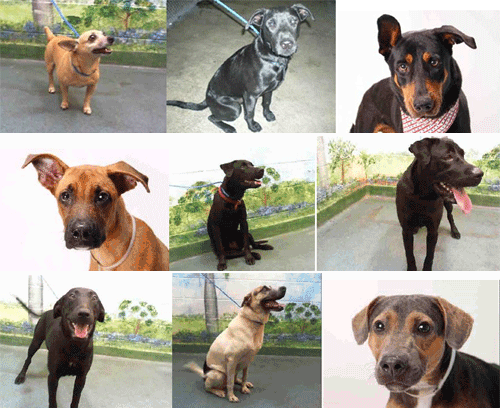
Body Language of Dogs
When a dog wags their tail slowly, they may be showing some doubt about their environment. They may not be sure the area they are in, is friendly, and they tread with caution. When a dog wags their tail fast and with large sweeping wags, they are usually showing signs of happiness. They can’t hold back their excitement. Sometimes this type of tail wag could be a sign of aggression, or they could be super energetic.
Watch your dog’s tail the next they wag it. Some say dogs wag their tail left to right when they see a stranger, and wag their tail right to left when they are wagging it at people they know.
Should you see a dog’s lips snarl by curling up, it may mean the dog is about to bite. It is usually an unconscious reflex, so that the soft flesh of their lips is away from their teeth, making it easy to bite in defense. But it doesn't always mean aggression. Sometimes it has to do with a toy they are playing with.
The position of a dog’s ears shows the level of focus or concentration the dog is giving to what is going on. When a dog’s ears are facing forward, the dog is being extremely attentive to what they hear. When their ears are back, they are listening for sounds, or being submissive. Dogs who have upright ears like German Shepherds will have their ears forward and in a horizontal position, signaling a contentment on their part.
A dog may be anxious when you see them licking their nose, giving a sideways glance, or if you see the white of half moon eyes.
A dog who licks their mouth, when there is no food, or yawns, may be telling you they want to be left alone, or they can be sleepy, confused, or feel stressed. If you see your dog looking like they are smiling, they may be telling you they want to play.
Canine Body Language is Not Scientific
All these theories about dog’s body language are not fact in any manner. When you are trying to understand what a dog might be telling you, it is just as important to observe their whole body and not just one part to get a better idea of what they are thinking. Aggression may not be aggression. Play might not be play. It depends on the dog and the whole picture you can put together.
We humans send signals with our body, and we perceive another’ body language with some accuracy. There are some cultural differences, but there are also many similarities that appear. A person who is tense will look stiff. A person who is nervous will make jerky movements. People who are relaxed move with some grace. Dogs too, will elicit similar body movements. So when you are trying to understand what your dog is saying, look at their posture, how they are moving, and you may get an idea of what they are trying to tell you.
Here are some tips that might help:
- A dog that is standing still will hold their weight in 1 of 3 ways. 1) All 4 feet are well balanced. This usually indicates that the dog is feeling calm and relaxed, comfortable and confident. 2) A dog is bearing more of their weight on their hind legs. This dog is readying themselves to move forward. They are usually confident and desiring to interact, maybe for good if playful, or bad reasons if showing aggression. 3) They are balancing themselves in a way that they can run away. This dog is afraid and ready to run.
- watch the path the dog is walking. A dog that is walking in a direct path in straight lines is showing they may be aggressive. Walking more in curved lines, show a more friendly demeanor.
- When dogs are playful, they tend to move vertically and horizontally. They tend to rock from side to side. Since running like this is really inefficient and would not help them get away if they were trying flee, they are signifying that they want to play. It is about fun and games with you or another dog, they are trying to engage with.
- Look at a dog’s eyes. When a dog is relaxed, their eyes look relaxed. If their eyes are rounded and big, they may be showing some surprise. If you see the whites of a dog’s eyes, known as whale eye, the dog may be tense, upset, scared and may even bite. So beware and be cautious.
- Look at a dog’s tongue and lips. If they appear loose and floppy, even if they are growling, they are more than likely being playful. A dog that is about to bite, will show their teeth, their lips and tongue are pulled back, and their facial expression may look like they are snarling.
- Tails tell a story. We smile as an way of expressing ourselves. Dogs use their tails. A tail that is wagging up in the air and fast, is a happy tail. A fast moving tail that is wagging low, may be a little nervous. A tail that is wagging slowly but high in the air, is confident. A tail that is wagging in the middle and moving back and forth fast, is a happy and excited dog. The base of the tail where it is closest to their body can tell you more what their wag is about than the tip of their tail can tell you. When the tail is as low as it can be, nearly covering their genitals, this may indicate fear. The tail will tell you a lot about the dog’s mood, and what they are thinking.
Dogs move their ears nearly 180 degrees going from front to back. When a dog’s ears are forward they are more confident about the situation. When their ears are close to their head and further back, they are usually more fearful or nervous. But ears are more difficult to read than a dog’s tail, because ear positions serve more than one purpose.
They use them as an expression of communication and also of course to hear. When they become alert to a noise, their ears will pop up. When their ears are forward they are paying attention to sounds what is right in front of them. They are showing confidence, but then a noise makes them move their ears and they go backwards. They could look nervous, with their ears back, and then a loud noise moves one of their ears forward.
Dogs and Humans Have a Connection
A dog’s body will tell you a lot about their emotions and what they are thinking. A dog’s body won’t lie, but the caveat is that we can make mistakes in reading their body language.
They have a connection with us, and they are trying to communicate their wants, and needs to us. Dogs are reading our body language and the signals we send them, are really better at it than we probably are. So try to take notice at the way your dog stands, how they move, their expressions, and how they act, even what their fur is doing. We have come to rely more on verbal communication, and don’t pay as close attention to body language. But as we become cognizant about what our dogs might be trying to tell us
The better you can understand what your dog is trying to tell you, the better you can respond to your dog, and the less frustration you both will hear..


